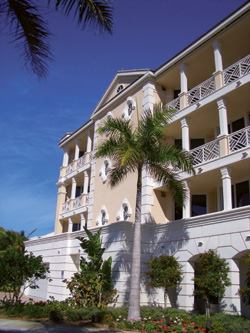In the Garden Look beyond the apartment structure at the rest of the garden-style apartment property for updates as well, architects say. Additional open space, pedestrian-friendly streetscapes and site plans, and a new approach to parking arrangements make these common rental communities more appealing and competitive with today’s single-family housing, especially when combined with other improvements.
The bottom line: It’s worth paying extra for creativity in the design and layout of your garden communities. It will make your buildings stand out and help increase rent and retention. “We keep trying to build a better mousetrap to set our projects apart,” says Perrin. “Much of the product is similar, and you simply have to rely on overall demand for success. However, new ideas and new designs can give you a temporary advantage–until they are copied.”
Say Goodbye to Garden Variety Increase amenities. Add services such as a personal trainer or chef.
Upgrade finishes. Incorporate granite countertops, ceramic tile, hardwood floors, and 10-foot ceilings.
Vary product type. Mix townhouses with garden apartments.
Upgrade appliances. Stainless steel brings a sleek, semi-commercial look.
Improve bathrooms. Offer double-bowl sinks and separate showers and baths.
Hide parking. Offer as many garages as possible; put parking behind the building.
Add room. Boost one-bedrooms to 800 square feet, two-bedrooms to 1,250 square feet, and three-bedrooms to 1,400 square feet.
Provide privacy. Give each unit an individual front door.
Integrate the architecture. Design garden apartments that fit within the context of the larger environment, borrowing architectural styles or details common in the community.
Incorporate universal design. Create a living space that accommodates residents of all ages and abilities.
